On this day in 1901, Italian Romantic composer, Giuseppe Verdi, died in the Grand Hotel et de Milan in Milan, Italy at the age of 87. Born Giuseppe Fortunino Francesco Verdi on 10 October 1813 in Le Roncole, a village near Busseto, then in the Département Taro which was a part of the First French Empire after the annexation of the Duchy of Parma and Piacenza. Primarily known for his operas; Nabucco, Rigoletto, Il trovatore, La traviata, Aida, Otello, and Falstaff. In my opinion, Verdi is one of the most influential composers of the 19th century. His works are frequently performed in opera houses throughout the world. Some of his themes have long since taken root in popular culture – such as “La donna è mobile” from Rigoletto, “Va, pensiero” (The Chorus of the Hebrew Slaves) from Nabucco, “Libiamo ne’ lieti calici” (The Drinking Song) from La traviata and the “Grand March” from Aida. Verdi’s masterworks dominate the standard repertoire a century and a half after their composition. Verdi was married to Giuseppina Strepponi (1859 – 1897 her death). 
The Final Footprint – Verdi and his wife were initially entombed in Cimitero Monumentale in Milan. Their bodies were dis-entombed and re-entombed in The Casa di Riposo per Musicisti, a rest home for retired opera singers and musicians which was founded by Verdi. It is located at 29 Piazza Buonarotti in Milan. The building was designed in the neo-Gothic style by Italian architect, Camillo Boito. A plaque outside the building reads: GVARDANO GL’ITALIANI GVARDA REVERENTE IL MONDO TVTTO A QVESTE SPOGLIE ONORANDE DI GIVSEPPE VERDI QVI RICOMPOSTE IN GLORIA PERPETVA NELLA DOLCE DIMORA OSPITALE DAL SOMMO MAESTRO VOLVTA. A bronze statue of Verdi was erected in Piazza G. Verdi in Busseto. A bronze bust was placed outside of the Teatro Massimo in Palermo.
#RIP #OTD in 1922 pioneer investigative journalist (Ten Days in a Madhouse), industrialist, inventor, charity worker, record-breaking trip around the world in 72 days, Nellie Bly died of pneumonia at St. Mark’s Hospital, New York City, aged 57. Woodlawn Cemetery in The Bronx
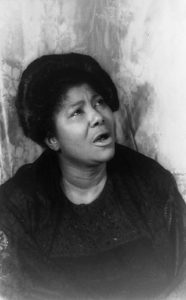 On this day in 1972 gospel singer, Civil Rights activist, The Queen of Gospel, Mahalia Jackson died at Little Company of Mary Hospital in Evergreen Park, Illinois, of heart failure and diabetes complications, at the age of 60. Born on October 26, 1911 in New Orleans. Possessing a powerful contralto voice, she became one of the most influential gospel singers in the world. She was described by entertainer Harry Belafonte as “the single most powerful black woman in the United States”. She recorded about 30 albums (mostly for Columbia Records) during her career.
On this day in 1972 gospel singer, Civil Rights activist, The Queen of Gospel, Mahalia Jackson died at Little Company of Mary Hospital in Evergreen Park, Illinois, of heart failure and diabetes complications, at the age of 60. Born on October 26, 1911 in New Orleans. Possessing a powerful contralto voice, she became one of the most influential gospel singers in the world. She was described by entertainer Harry Belafonte as “the single most powerful black woman in the United States”. She recorded about 30 albums (mostly for Columbia Records) during her career.
“I sing God’s music because it makes me feel free”, Jackson once said about her choice of gospel, adding, “It gives me hope. With the blues, when you finish, you still have the blues.”
 The Final Footprint
The Final Footprint
Two cities paid tribute: Chicago and New Orleans. Beginning in Chicago, outside the Greater Salem Baptist Church, 50,000 people filed silently past her mahogany, glass-topped coffin in final tribute to the queen of gospel song. The next day, as many people who could—6,000 or more—filled every seat and stood along the walls of a city public concert hall, the Arie Crown Theater of McCormick Place, for a two-hour funeral service. Her pastor, Rev. Leon Jenkins, Mayor Richard J. Daley and Mrs. Coretta Scott King eulogized her during the Chicago funeral as “a friend – proud, black and beautiful”. Sammy Davis Jr. and Ella Fitzgerald paid their respects. Joseph H. Jackson, president of the National Baptist Convention, U.S.A., Inc., delivered the eulogy at the Chicago funeral. Aretha Franklin closed the rites with a moving rendition of “Precious Lord, Take My Hand”.
Three days later, a thousand miles away, the scene repeated itself: the long lines, the silent tribute, and thousands filling the great hall of the Rivergate Convention Center in downtown New Orleans. Mayor Moon Landrieu and Louisiana Governor John J. McKeithen joined gospel singer Bessie Griffin. Dick Gregory praised Jackson’s “moral force” as the main reason for her success. Lou Rawls sang “Just a Closer Walk With Thee”. The funeral cortège of 24 limousines drove slowly past her childhood place of worship, Mt. Moriah Baptist Church, where her recordings played through loudspeakers. The procession made its way to Providence Memorial Park in Metairie, Louisiana, where she was entombed. Despite the inscription of her birth year on her gravestone as 1912, she was actually born in 1911.
| John Updike | |
|---|---|
On this day in 2009, novelist, poet, short story writer, art critic, and literary critic, John Updike died of lung cancer at a hospice in Danvers, Massachusetts, at the age of 76. Born John Hoyer Updike on March 18, 1932 in Reading, Pennsylvania. One of only three writers to win the Pulitzer Prize for Fiction more than once (the others were Booth Tarkington and William Faulkner), Updike published more than twenty novels, more than a dozen short-story collections, as well as poetry, art and literary criticism and children’s books during his career.
Hundreds of his stories, reviews, and poems appeared in The New Yorker starting in 1954. He also wrote regularly for The New York Review of Books. Perhaps best known for his “Rabbit” series (the novels Rabbit, Run; Rabbit Redux; Rabbit Is Rich; Rabbit at Rest; and the novella Rabbit Remembered), which chronicles the life of the middle-class everyman Harry “Rabbit” Angstrom over the course of several decades, from young adulthood to death. Both Rabbit Is Rich (1982) and Rabbit at Rest (1990) were recognized with the Pulitzer Prize.
Describing his subject as “the American small town, Protestant middle class”, Updike was recognized for his careful craftsmanship, his unique prose style, and his prolific output, writing on average a book a year.
His fiction is distinguished by its attention to the concerns, passions, and suffering of average Americans, its emphasis on Christian theology, and its preoccupation with sexuality and sensual detail. In my opinion, he is one of the great American writers. Updike’s distinctive prose style features a rich, unusual, sometimes arcane vocabulary. He described his style as an attempt “to give the mundane its beautiful due”.
Updike married Mary E. Pennington, an art student at Radcliffe College, in 1953, while he was still a student at Harvard. She accompanied him to Oxford, England, where he attended art school. They divorced in 1974. In 1977 Updike married Martha Ruggles Bernhard, with whom he lived for more than thirty years in Beverly Farms, Massachusetts. He died of lung cancer at a hospice in Danvers, Massachusetts, on January 27, 2009, at the age of 76.
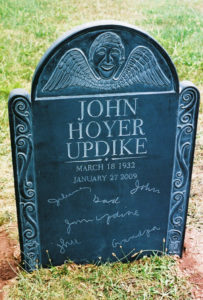 The Final Footprint
The Final Footprint
A cenotaph was placed for Updike at Robeson Lutheran Church Cemetery in Plowville, Berks County, Pennsylvania, USA
Updike demonstrated his own fear of death in some of his more personal writings, including the poem “Perfection Wasted” (1990):
And another regrettable thing about death
is the ceasing of your own brand of magic…
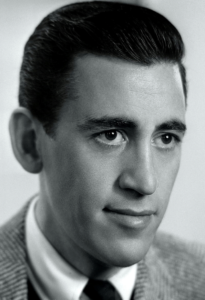 On this day in 2010, writer J. D. Salinger died in Cornish, New Hampshire at the age of 91. Born Jerome David Salinger in Manhattan on January 1, 1919. Perhaps best known for his widely-read novel The Catcher in the Rye. Following his early success publishing short stories and The Catcher in the Rye, Salinger led a very private life for more than a half-century. He published his final original work in 1965 and gave his last interview in 1980.
On this day in 2010, writer J. D. Salinger died in Cornish, New Hampshire at the age of 91. Born Jerome David Salinger in Manhattan on January 1, 1919. Perhaps best known for his widely-read novel The Catcher in the Rye. Following his early success publishing short stories and The Catcher in the Rye, Salinger led a very private life for more than a half-century. He published his final original work in 1965 and gave his last interview in 1980.
Salinger was raised in Manhattan and began writing short stories while in secondary school. Several were published in Story magazine in the early 1940s before he began serving in World War II. In 1948, his critically acclaimed story “A Perfect Day for Bananafish” appeared in The New Yorker magazine, which became home to much of his later work. The Catcher in the Rye was published in 1951. The success of The Catcher in the Rye led to public attention and scrutiny. Salinger became reclusive, publishing new work less frequently. He followed Catcher with a short story collection, Nine Stories (1953); a volume containing a novella and a short story, Franny and Zooey (1961); and a volume containing two novellas, Raise High the Roof Beam, Carpenters and Seymour: An Introduction (1963). His last published work, a novella entitled “Hapworth 16, 1924”, appeared in The New Yorker on June 19, 1965.
In February 1955, at the age of 36, Salinger married Claire Douglas a student at Radcliffe.
In 1972, at the age of 53, Salinger had a relationship with 18-year-old Joyce Maynard. Maynard, at this time, was already an experienced writer for Seventeen magazine. The New York Times had asked Maynard to write an article for them which, when published as “An Eighteen-Year-Old Looks Back On Life” on April 23, 1972, made her a celebrity. Salinger wrote a letter to her warning about living with fame. After exchanging 25 letters, Maynard moved in with Salinger the summer after her freshman year at Yale University.
Salinger was romantically involved with television actress Elaine Joyce for several years in the 1980s. The relationship ended when he met Colleen O’Neill (b. June 11, 1959), a nurse and quiltmaker, whom he married around 1988.
The Final Footprint
Salinger was cremated.

 On this day in 2014 singer, songwriter and social activist Pete Seeger died at New York-Presbyterian Hospital in New York City, at the age of 94. Born Peter Seeger on May 3, 1919 at the French Hospital, Midtown Manhattan.
On this day in 2014 singer, songwriter and social activist Pete Seeger died at New York-Presbyterian Hospital in New York City, at the age of 94. Born Peter Seeger on May 3, 1919 at the French Hospital, Midtown Manhattan.
A fixture on nationwide radio in the 1940s, Seeger had a string of hit records during the early 1950s as a member of the Weavers, most notably their recording of Lead Belly’s “Goodnight, Irene”, which topped the charts for 13 weeks in 1950. Members of the Weavers were blacklisted during the McCarthy Era. In the 1960s, Seeger re-emerged on the public scene as a prominent singer of protest music in support of international disarmament, civil rights, counterculture, workers rights, and environmental causes.
As a songwriter perhaps best-known for his songs; “Where Have All the Flowers Gone?” (with additional lyrics by Joe Hickerson), “If I Had a Hammer (The Hammer Song)” (with Lee Hays of the Weavers), “Kisses Sweeter Than Wine” (also with Hays), and “Turn! Turn! Turn!”. “Flowers” was a hit recording for the Kingston Trio (1962); Marlene Dietrich, who recorded it in English, German and French (1962); and Johnny Rivers (1965). “If I Had a Hammer” was a hit for Peter, Paul and Mary (1962) and Trini Lopez (1963) while the Byrds had a number one hit with “Turn! Turn! Turn!” in 1965.
Seeger was one of the folk singers responsible for popularizing the spiritual “We Shall Overcome” (also recorded by Joan Baez and many other singer-activists) that became the acknowledged anthem of the Civil Rights Movement, soon after folk singer and activist Guy Carawan introduced it at the founding meeting of the Student Nonviolent Coordinating Committee (SNCC) in 1960. In the PBS American Masters episode “Pete Seeger: The Power of Song”, Seeger said it was he who changed the lyric from the traditional “We will overcome” to the more singable “We shall overcome”.
Seeger married Toshi Aline Ota in 1943, whom he credited with being the support that helped make the rest of his life possible. The couple remained married until Toshi’s death in on 9 July 2013 in Beacon, at the age of 91.
The Final Footprint
Seeger was cremated.
RIP #OTD in 2017 actress (Hiroshima mon amour, Amour, Thérèse Desqueyroux) Emmanuelle Riva died from cancer in Paris, aged 89. Cimetière de Charonne, Paris.
#RIP #OTD in 2021 actress (The Last Picture Show; Young Frankenstein; High Anxiety; History of the World, Part I; Spanglish; The Mary Tyler Moore Show) and comedienne Cloris Leachman died at her home in Encinitas, California, aged 94. Cremation
Have you planned yours yet?
Follow TFF on twitter @RIPTFF

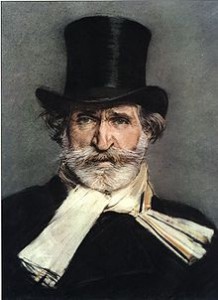


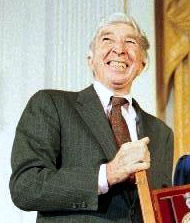

Pingback: One Day You Appeared » TeaWithTater.com